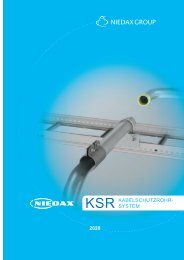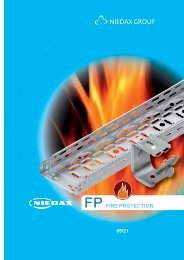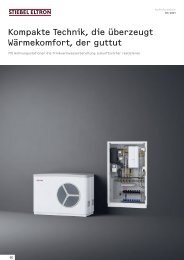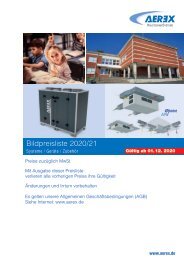EATON-POWER-QUALITY_Catalog_Power-infrastructure_01-2020_EN
Create successful ePaper yourself
Turn your PDF publications into a flip-book with our unique Google optimized e-Paper software.
UPS Basics<br />
Why use UPS?<br />
An uninterruptable power supply (UPS) protects IT equipment and other electrical<br />
loads from problems that can affect the public electricity supply. It performs the<br />
following three basic functions:<br />
1. Prevents hardware damage typically<br />
caused by surges and spikes. Many<br />
UPS models continually condition<br />
incoming power as well.<br />
2. Prevents data loss and corruption.<br />
Without a UPS, data stored on<br />
devices that are subjected to<br />
a hard system shutdown may<br />
become corrupted or even lost<br />
completely. In conjunction with<br />
power management software,<br />
a UPS can facilitate a graceful<br />
system shutdown.<br />
3. Provides availability for networks<br />
and other applications while<br />
preventing downtime. UPSs can<br />
also be paired with generators<br />
in order to give the generators<br />
sufficient time to power up in the<br />
event of a power cut.<br />
Eaton UPSs address all of the nine common power problems below:<br />
1. <strong>Power</strong> failure<br />
typically caused by lightning strike<br />
or fault with the power company’s<br />
equipment. Without a UPS, this will<br />
cause a hard shutdown, putting<br />
data at risk.<br />
6. Electrical noise<br />
“Interference”, typically from radio<br />
transmitters, welding equipment<br />
etc. Noise can cause hard-to-find<br />
intermittent problems.<br />
2. <strong>Power</strong> sag<br />
Short-term voltage reduction,<br />
often caused by start-up of nearby<br />
large loads. <strong>Power</strong> sags can<br />
cause equipment crashes and<br />
hardware damage.<br />
7. Frequency variation<br />
Changes in supply frequency,<br />
usually only found on supplies<br />
from generators.<br />
3. <strong>Power</strong> surge<br />
Short-term high voltage, usually<br />
caused by lightning strike nearby.<br />
Spikes almost always lead to data<br />
loss and/or hardware damage.<br />
8. Switching transient<br />
Instantaneous undervoltage,<br />
typically lasting a few nanoseconds.<br />
4. Undervoltage<br />
Reduced supply voltage lasting<br />
from minutes to days. Typically<br />
occurs when supply network is<br />
overloaded. Can lead to computers<br />
behaving unpredictably.<br />
9. Harmonic distortion<br />
Disortion of the normal smooth<br />
supply waveform. Can be caused<br />
by variable spreed drivers and<br />
even photocopiers. Can cause<br />
communication errors, overheating<br />
and hardware damage.<br />
5. Overvoltage<br />
Increased supply voltage lasting<br />
from minutes to days. Often<br />
triggered by rapid reductions<br />
in power demands, overvoltage<br />
can damage hardware.<br />
8 <strong>EATON</strong> <strong>Power</strong> <strong>infrastructure</strong> solutions & products


















